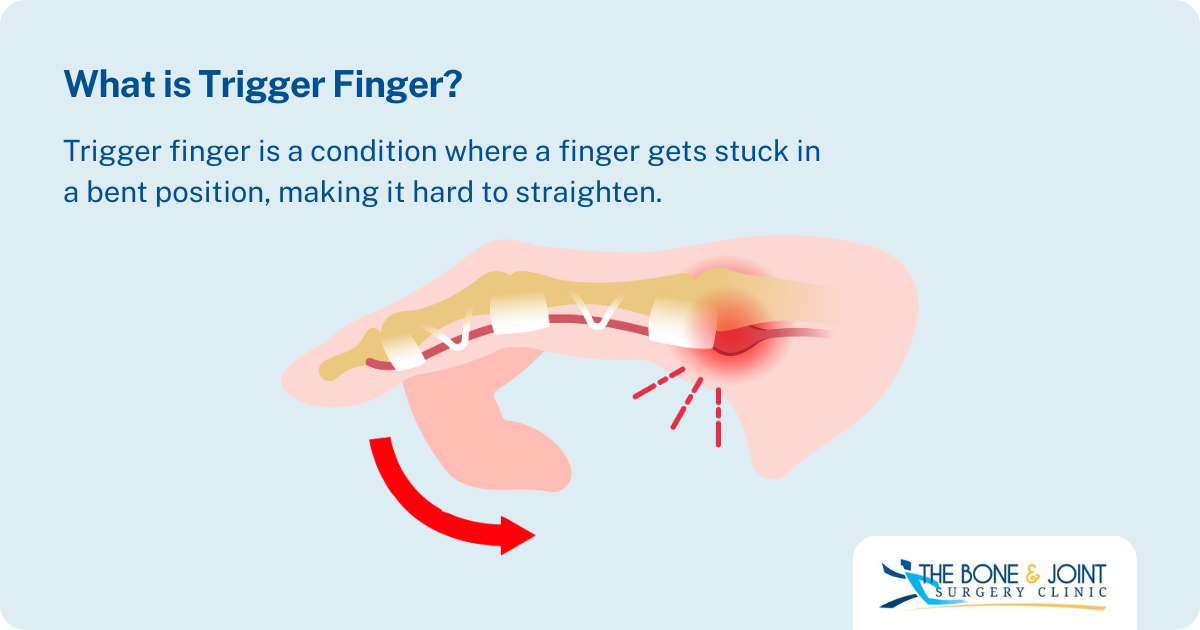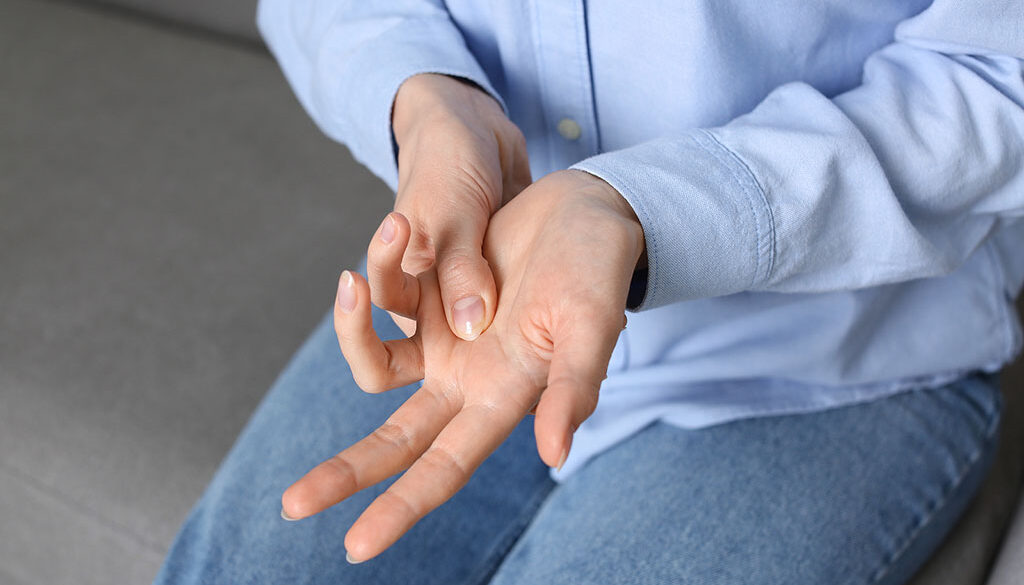How Our Non-Surgical Treatment for Trigger Finger Eliminates Your Pain
There are so many activities you do every day without giving them a second thought. You effortlessly button shirts, shake hands and use a pen to jot notes with ease. But with trigger finger, these simple tasks suddenly become an agonizing challenge, affecting almost every aspect of your daily life.
We have had many patients seek relief for this painful condition, The good news is that we offer non-surgical treatments for trigger finger. Through our access to state-of-the-art medicine, we can help you recover faster and restore your quality of life. We encourage anyone who has the symptoms of trigger finger to contact us for long-lasting relief.
What Does Trigger Finger Feel Like?

Trigger finger happens when your finger gets stuck in a bent position. Normally, the tendon in your finger moves smoothly within a protective sheath. However, if this sheath becomes damaged or tightens, it can make it harder for the tendon to glide, causing stiffness and difficulty straightening your finger.
As a result, your finger is stuck in a bent position, although sometimes, it can suddenly straighten, causing a snapping noise. It can affect any finger, but we see it most often in the ring finger and the thumb.
Non-Surgical Treatment for Trigger Finger
How Can Trigger Finger Be Treated Without Surgery?
We take a conservative approach to medicine. That means we will only recommend surgery when other solutions have not been successful. We believe this serves our patients best and enables them to get back to the activities and the life they enjoy faster.
Therefore, we utilize a variety of non-surgical treatments for trigger finger. Depending upon your individual situation, we may recommend:
- Rest: This is one of the first lines of treatment. Often, resting your hand and simply avoiding activities that cause you pain or aggravate the condition can help. In certain cases, it may completely resolve the situation.
- Splinting: Using a splint to keep your finger straight can be beneficial, especially at night. It helps prevent movement while you sleep.
- Exercises: Certain stretching exercises can go a long way toward alleviating the situation, and our physical therapists can provide a treatment plan for you. Were you aware we have our own in-house physical therapy services? Now, after surgery, you can return to us for additional outpatient care.
- Medication: NSAIDs and other over-the-counter medicines like acetaminophen (Tylenol) can help. We’ll provide a list of good options to relieve your pain and inflammation.
- Trigger Finger Injections: Steroid injections can be placed at the base of the affected finger. We’ve found this to be effective in many cases.
However, if these methods aren’t successful, surgery may be needed.
What Are the Symptoms of Trigger Finger?
You may not even notice the first signs of trigger finger because they often start slowly—and usually without a clear indication of overuse or injury. But gradually, these symptoms will get worse, even to the point of being severe and almost debilitating.
The main symptom of trigger finger is a finger that is locking in a bent position, only to suddenly pop straight. It also may feel like it is “catching.”
Other symptoms of trigger finger include:
- Popping or clicking when the finger moves
- A bump at the base of the finger that is affected
- Tenderness
- Stiffness, particularly first thing in the morning
- Pain when straightening the finger or bending it
When you schedule an appointment with our orthopedic surgeons in Raleigh, we’ll closely evaluate your symptoms to come to an accurate and timely diagnosis. Only then will we move forward with a customized treatment plan, and as discussed earlier, this plan does not necessarily involve surgery.
When Is Surgery for Trigger Finger Necessary?
We’ve mentioned some non-surgical treatments for trigger finger, and we’ve found that for most of our patients, these methods are effective. If your trigger finger isn’t resolved through these methods, then we’ll discuss surgery.
Whether or not you need surgery also depends upon the extent that your trigger finger is affecting your everyday life. For some, it may only be a mild annoyance, but for others, it can be an extremely painful condition that makes it difficult to function.
Our goal is for you to be as pain-free as possible so you can continue doing the things you love. So if your discomfort from trigger finger is particularly intense, we may recommend surgery.
What Happens During Surgery for Trigger Finger?
During this procedure, we’ll perform what is called a trigger finger release. Remember the tendon sheath we discussed earlier? During a trigger finger release, we make a small incision in your palm to carefully release the tightened tendon sheath, allowing your finger to move freely again— and without pain.
For Relief From the Pain of Trigger Finger, Contact Our Leading Orthopedic Surgeons in Raleigh Today
For decades, our orthopedic practice has been the trusted choice for expert, patient-centered care. As the oldest and most respected orthopedic provider in the area, we prioritize nonsurgical treatments whenever possible, helping you heal and regain mobility without unnecessary procedures. Plus, with in-house physical therapy, your recovery is seamless and convenient.
Schedule an appointment today and experience the difference of expert, compassionate care.
The content within this article and others on this website is only for educational purposes and should not be considered as medical advice. For any questions or concerns, please consult with your healthcare provider.
====
Sources:
American Academy of Orthopaedic Surgeons, “Trigger Finger,” https://orthoinfo.aaos.org/en/diseases–conditions/trigger-finger/
Mayo Clinic, “Trigger Finger,” https://www.mayoclinic.org/diseases-conditions/trigger-finger/diagnosis-treatment/drc-20365148


